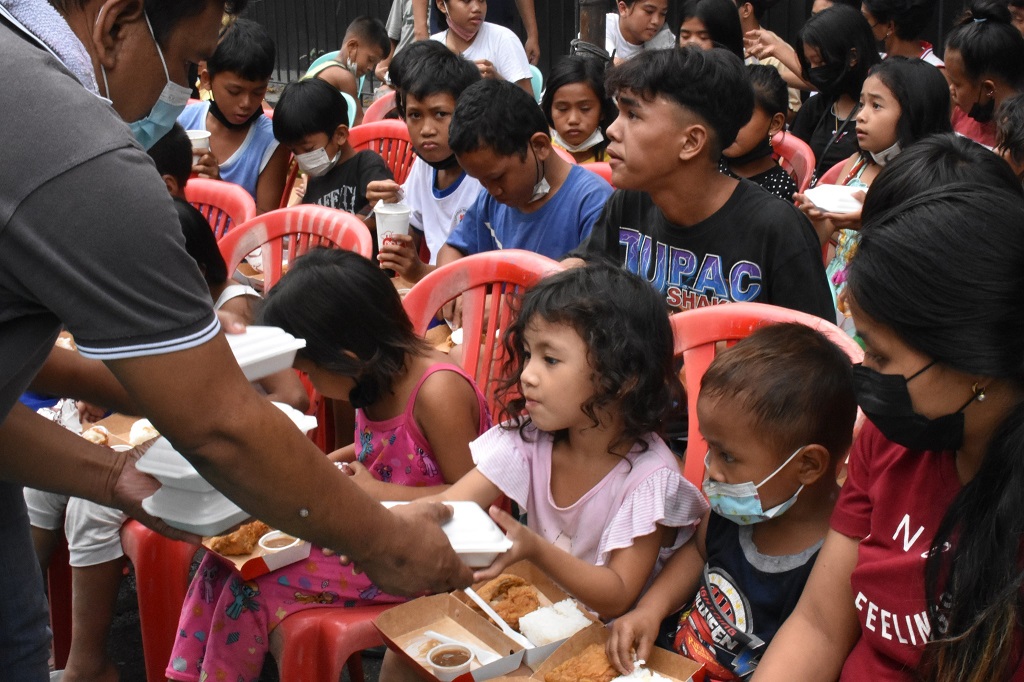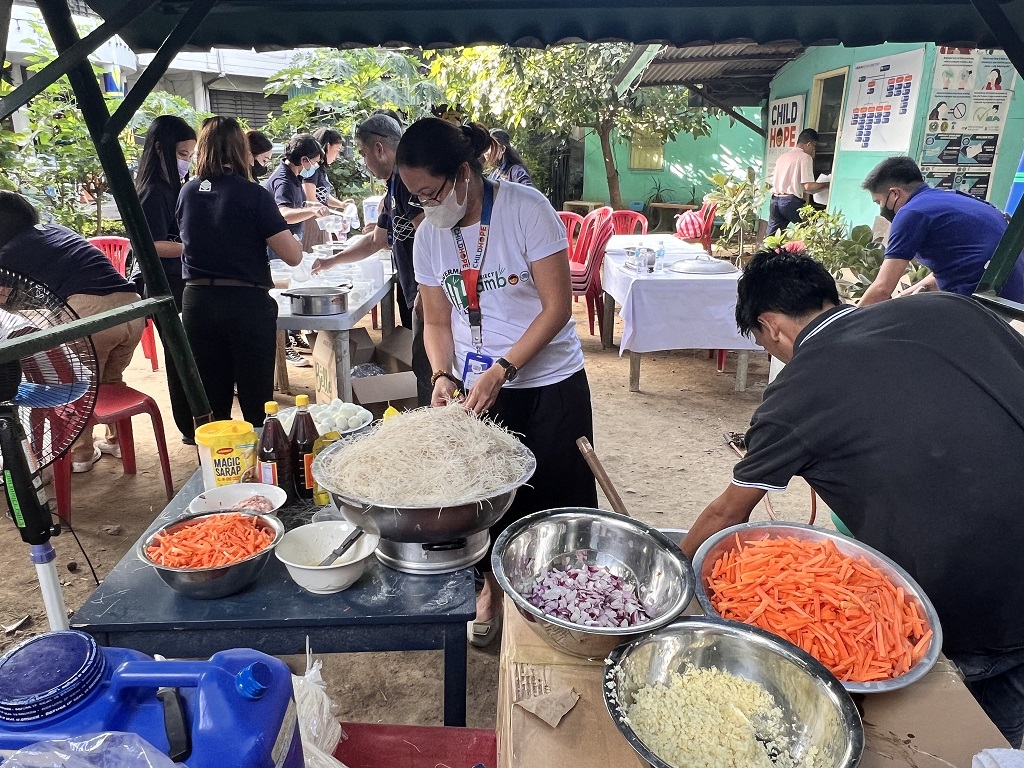In a world that often changes too fast, seeing the smiles across the faces of children serves as a reminder of innocence and hope. Yet, for countless street children, their reality is far removed from this ideal. This is why the importance of community service cannot be overstated. Today, it stands as a beacon of hope and a testament to the power of collective action.
Let’s discuss in brief what community service is, its different types, and how it impacts the community as a whole. We’ll also detail the projects and programs we have in place where you can play a part, thereby championing the cause of street children.
What is Community Service?
Community service, at its core, refers to voluntary work intended to benefit the community or individuals within the community. It embodies the spirit of giving back, nurturing a culture where individuals come together, pooling their skills, resources, and time to address various societal needs.
As a frontliner in community service, Childhope Philippines believes that such advocacy is more than just a gesture; instead, it’s a lifeline for those in need. Hence, we see the value of playing the role of the bridge that connects them with those who can help.

What are the 3 Types of Community Service?
Community service can be classified a number of ways. Below are the three common types of service.
Direct Service
This involves hands-on, face-to-face interaction with individuals or communities in need. It includes activities ranging from distributing food to the homeless and tutoring children, to organizing recreational activities for underprivileged youth. In the case of Childhope Philippines, we take part in direct service wherein we engage directly with street children, providing them with basic necessities, educational opportunities, and emotional support.
Indirect Service
While not directly interacting with the beneficiaries, indirect service nonetheless plays a crucial role in supporting community initiatives. It encompasses tasks such as fundraising for donations, advocacy, and administrative support. For NGOs, indirect service ensures the sustainability and reach of their programs, enabling them to serve more individuals and create lasting change.
Advocacy and Awareness
This type of community service focuses on raising awareness about specific issues or advocating for policy changes to address societal challenges. By educating the public and policymakers, advocates can drive systemic change, ensuring that the needs of vulnerable populations, like street children, are prioritized and addressed.
Nonprofit Organization Community Service Activities
Nonprofit organizations play a pivotal role in orchestrating and facilitating community service programs and activities. For NGOs dedicated to helping street children, these projects are diverse. Here are a few activities:
- Shelter and Basic Needs: Establishing shelters, providing food, clothing, and healthcare services are fundamental initiatives. Ensuring that street children have a safe haven and access to basic necessities is paramount to their well-being.
- Education and Skill Development: Investing in education and skill development programs equips street children with the tools they need to break the cycle of poverty and lead fulfilling lives. From informal learning centers to vocational training, NGOs strive to empower these children, offering them a brighter future.
- Psychosocial Support: Recognizing the emotional and psychological trauma many street children endure, NGOs provide counseling, therapy, and recreational activities aimed at healing and restoring their sense of self-worth.
Childhope Philippines’ Community Service Activities
Through our Street Education and Protection (STEP) Program, we proactively respond to the call on how to help the street children and youth. Our STEP Program has four major components, with the primary goal of putting the best interests of children — as well as their holistic development — front and center.
Education
Childhope’s KalyEskwela program (literally translates to “school on the streets”) involves the use of a mobile van with audiovisual equipment to conduct alternative education sessions and basic literacy and numeracy classes. Under the DepEd-accredited Alternative Learning System (ALS), street children and youth learn through modules guided by our street educators trained as instructional managers.
Seeing the need for better access to technology and other learning tools, Childhope has launched the new KalyEskwela Mobile Community Learning Hub or KMCLH.
Health and Medical Services
The Mobile Health Clinic (KliniKalye, literally translating to “clinic on the streets”) provides primary preventive medical care, consultations, and treatments. This ensures that the children are healthy and in full physical capacity to learn.
Psychosocial Interventions
These programs include psychosocial aid and counseling. We help the kids and their parents cope up with stress and the challenges that they encounter while learning. Moreover, we provide assistance to shelters especially to those with completely neglected and abandoned children.
Skills Development
Finally, we train the street children in leadership, computer literacy, sports, arts, and other skills. We help them develop these skills, nurture their good traits, and apply the values they have learned in life planning.
In addition, we also conduct trade and tech skills training (Youth Empowerment Project) to help older individuals to gain income to support themselves and their families.
Related Article: From Nothing to Something: A Story of Hope from Childhope Philippines’ Livelihood Assistance Program

What are the Community Service Benefits?
There are several benefits community service brings, which extend beyond the immediate impact on the beneficiaries. Here are a few of them.
Fosters Civic Responsibility
Engaging in community service cultivates a sense of civic responsibility and active citizenship. It instills values of empathy, compassion, and social responsibility, nurturing individuals who are committed to making a difference.
Strengthens Communities
Community service fosters solidarity and unity within communities. By coming together to address shared challenges, community members build stronger bonds, creating cohesive and resilient communities.
Supports Personal Growth and Development
Volunteers often experience personal growth through community service. It offers opportunities for learning, self-reflection, and skill development, enriching individuals both professionally and personally.
Creates Lasting Impact
Beyond the immediate benefits, community service creates a ripple effect, driving systemic change and fostering sustainable solutions to complex societal issues. It lays the foundation for a more inclusive, equitable, and compassionate society.

Become a Community Service Volunteer Today
Community service is a powerful catalyst for change, offering a ray of hope to those in need and transforming communities one act at a time. For organizations dedicated to helping street children, it’s a calling, a mission, and a testament to the enduring spirit of humanity. As we continue our journey, let us embrace the transformative power of community service, forging a path towards a brighter, more inclusive future for all.
You have the power to make a difference in the lives of street children. Through Childhope Philippines, you can support our advocacies by volunteering today to directly affect the lives of these children. As one, we can create a future where every child can thrive and succeed.
